TRAVELS WITH YOUR NAVIGO – POISSY
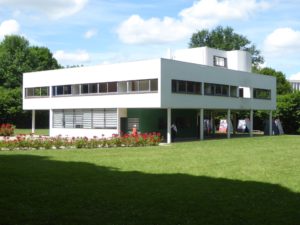
Located 24 kms west of Paris on the River Seine and bordering the royal forest of Saint-Germain-en-Laye, lies the fortified town of Poissy. An important religious centre in the Middle Ages, it was also a royal city and the birthplace of Kings Louis IX—later sanctified as Saint Louis—and Philippe III, and today known as the location of one of the landmark buildings of the 20th century, the World Heritage listed Villa Savoye by Le Corbusier.
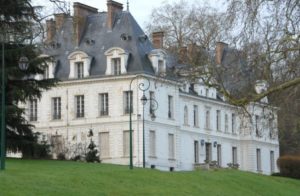
Poissy is known these days for manufacturing, with factories for Peugeot-Citroën and Siemens sequestered in the “Technoparc” on the edge of town. However, there is still a distinct aristocratic presence in and around Poissy, with numerous impressive houses, former royal residences and properties of the nobility close by in Saint-Germain-en-Laye.
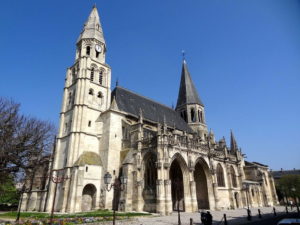
The town’s most important building is the collegiate church of Notre Dame de Poissy, founded in 1016. The original church was rebuilt in the 12th century, and by the early 19th century had fallen into disrepair. It was restored by the Architect, Viollet-le-Duc, who was responsible for the restoration of the walls of Carcassonne. The church has a rather odd appearance with its pair of Romanesque octagonal bell-towers, a veritable tangle of flying buttresses, pinnacles and radiating chapels in the Gothic style, all reflecting different stages of its past.
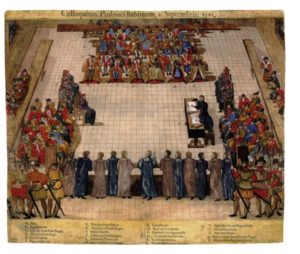
An Augustinian convent established during the Middle Ages later became a Royal Abbey, and in September 1561 its refectory was the location for a Colloquy arranged by Catherine de Medici. This was a religious conference whose aim was to effect reconciliation between the Catholics and Protestants (Huguenots) of France. It ended in failure a month later due to seemingly irreconcilable differences between the doctrines.
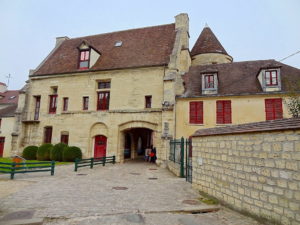
Today the 14th century fortified gatehouse, the Porterie, once the entrance into the Abbey, is now the Musée du Jouet (Toy Museum), housing a fascinating collection of around 800 toys dating from the 19th century. Note that the museum will re-open in May this year, following renovations.
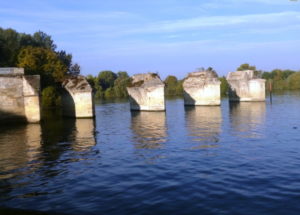
Until the 19th century, the town’s ramparts and fortifications were still intact. Vestiges still remain in the town, such as the 13th century Ancien Pont de Poissy, built at a time when the Seine was wider and the banks lower than today. It had gatehouses at each end, 37 arches and 4 mills, and was fortified in the 17th century.
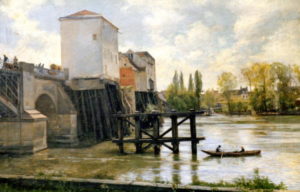
It was destroyed by Allied bombing during WWII. We can see what the bridge looked like before this catastrophe as it was a favourite subject for many artists including Monet, Pissarro, JMW Turner, Gros and Meissonier in the 19th Century.
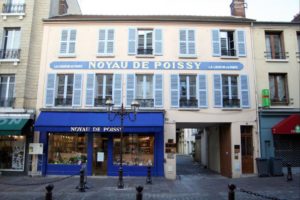
Among numerous buildings of distinction in the town is the Distillerie du Noyau de Poissy on rue du General de Gaulle, right in the middle of town. This houses the last artisanal distillery in the Île-de-France region, producing a local liqueur, dating back to the 1600s. ‘Noyau de Poissy’ is distilled from apricot kernels in the same manner as a fortified wine, and then infused with herbs commonly found in the neighbourhood.
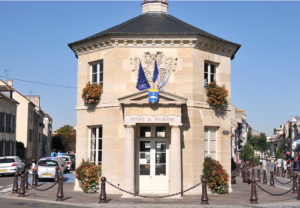
Check out the Tourist Office in rue du Général de Gaulle. This is housed in the former Pavilion de l’Octroi, which once marked the entrance into the town and served as the collection place for fees on animals sold at the market.
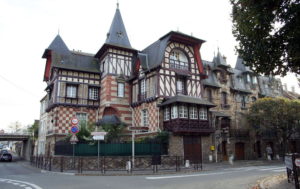
The town and vicinity has long had an association with well-known architects. One of the most architecturally outstanding houses in town is the home and atelier of the architect Théophile Bourgeois, who worked on a number of important projects in the vicinity. Built at the beginning of the 20th century, his home was an expression of the architect’s own ideas about the design and construction of modern country houses, as expressed in his book ‘La Villa Moderne’, published between 1899 and 1903.
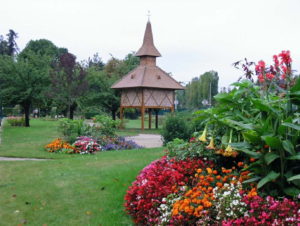
For a relaxing stroll, head to Parc Meissonier, named for the 19th century painter who became famous for his historical depictions of Napoleon. A contemporary of Edouard Manet, Meissonier became mayor of Poissy in the 1870s and lived next door to this beautiful 10 hectare English-style garden.
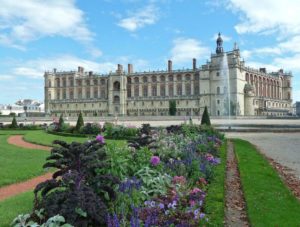
Six kms. from Poissy lies the 16th century Château de Saint-Germain-en-Laye. It was a royal residence, birthplace of Louis XIV, and favourite of François 1er, whose wedding ceremony and festivities were held here in 1514. James II of England resided here after his defeat by William of Orange in 1690.
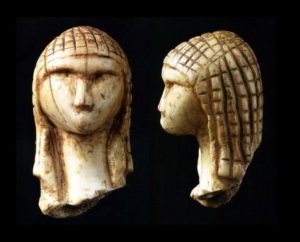
Nowadays, it is the location of the Musée d’Archéologie Nationale, housing fascinating artefacts from prehistory to the beginning of the Middle Ages. Must-see exhibits include the ‘Venus of Brassempouy’, a small head carved from Mammoth ivory, dates back 25,000 years, and said to be one of the oldest depictions of a human ever found. It was discovered in 1892 in a cave in far south western France; there’s a 3,000 year old Cretan helmet, pre-Roman bronze breastplates, gold from Gaul and a huge haul of Gallo-Roman jewellery, among so many other priceless treasures. Note that due to its use as the national archaeological museum, there are no traditionally furnished rooms in the chateau.
Local buses run between Poissy and Saint-Germain-en-Laye about every 20 mins. for the 7 minute trip, alighting at Place Charles de Gaulle. You might decide to take the train back to Paris, on RER Line A, from St Germain-en-Laye, using your Navigo.
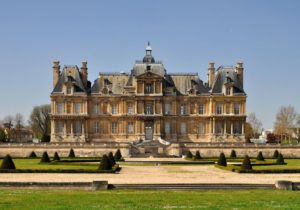
Just 10 mins. by road from Poissy, through the old royal hunting forest of Saint-Germain-en-Laye, is the magnificent Château de Maisons, designed by the 17th century architect François Mansart. A precursor to Versailles, it’s a prime example of French baroque architecture, and the only one of Mansart’s châteaux still standing.
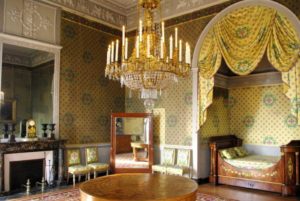
It was the home of Rene de Longueil, the big-spending Superintendent of Finance under Louis XlV. Wander the beautiful gardens and explore the fine 18th century interiors. It is also referred to as Chateau Maisons-Laffitte, in recognition of one of its 19th century owners.
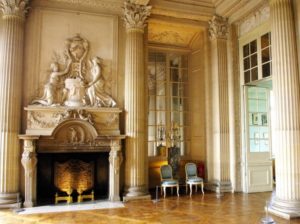
Buses leave from Gare de Poissy to Gare de Maisons-Laffitte via Gare de Saint Germain de Laye about every 20 mins. A change may be required at Saint Germain-en-Laye. The whole trip may take between 45mins. and 1 hr. but it’s very do-able. You can take RER Line A back to Gare St Lazare in Paris.
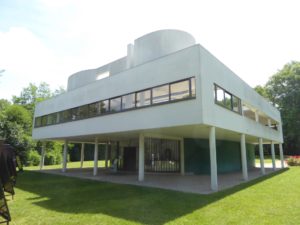
For lovers of modern architecture, a trip out to Poissy means a pilgrimage to one of the most significant buildings of the 20th century, the Villa Savoye by Le Corbusier. He began work on the project in September 1928, which was completed in 1929.
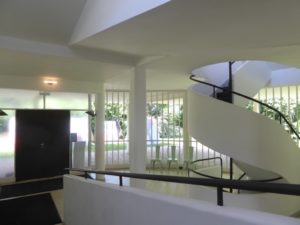
It is generally agreed that the house single handedly transformed Le Corbusier’s career. It was the culmination of a decade during which Le Corbusier worked to articulate what he regarded as the essence of modern architecture, whereby he considered the nature of modern life and architecture’s role in the new machine age. He distilled these ideas into a manifesto of the “five points” principles of what was known as the Modernist movement, or the International Style, and became one of the most important precedents in the history of architecture.
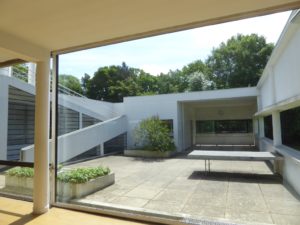
The house was built as a country retreat for the Savoye family, but after being purchased by a neighbouring school, it became the property of the French state in 1958. After surviving several proposals to demolish it, the house was designated as an official French historic monument in 1965. It was inscribed on the World Heritage List in 2016, as one of 17 of Le Corbusier’s projects.
Getting to Villa Savoye: Take the train from Châtelet les Halles (journey takes around 35 mins.) or Gare St Lazare (around 18 mins.) to Poissy, and then either take the local No. 50 bus to the gate of the house, or hop in a cab for the 5 – 7 min. ride to the front gate, or you can walk from the station, which will take around 20 mins., then walk up the long drive to the house.
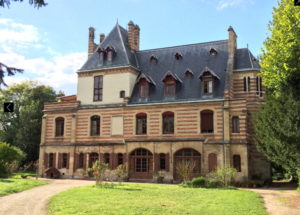


Cheryl,
Thanks for a really interesting post. Poissy has such a rich mixture of heritage from such a long span of time, that we really only scratched the surface during our first visit.
Graham